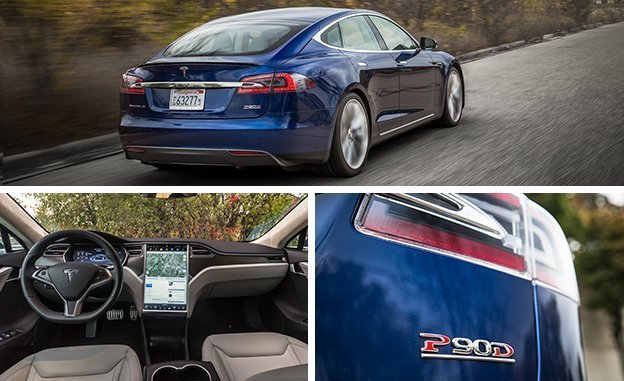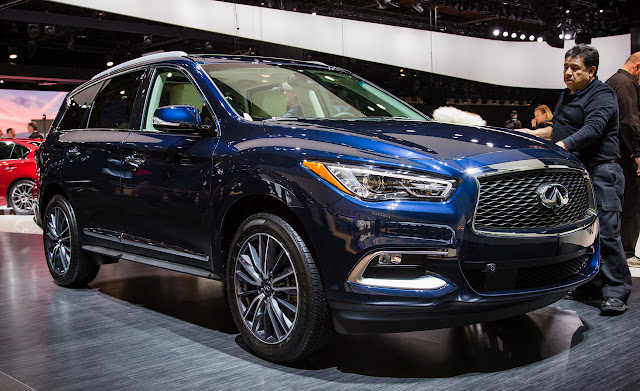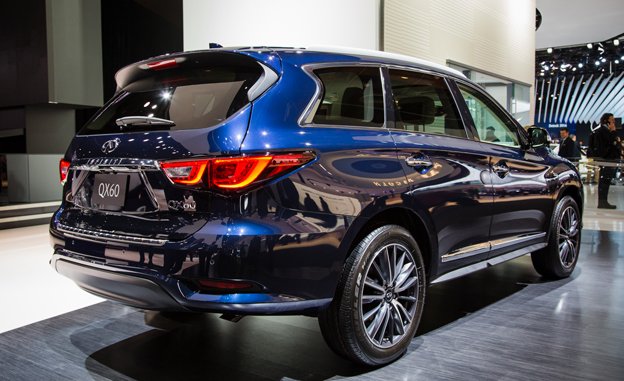With 300,000-plus U.S. sales to its credit last year, the Ford Fusion plays a key role in its maker’s plan to rule the auto world. And now, three years into its current generation, Ford has tweaked its mid-size offering to fortify its position against a host of competitors. The key addition is the revived Fusion Sport, which promises to raise a ruckus in suburbs overrun with Camrys thanks to its 325-hp twin-turbo V-6, all-wheel drive, and fortified chassis systems. Meanwhile, all five members of this sedan family receive fresh front fascias, revised interior trim, and significant infotainment upgrades for 2017.
With 10 or so competitors scrambling to stem buyer flight to crossovers, the traditional family sedan has become a hotbed of design and engineering. The bestselling Toyota Camry was refurbished a year ago, the Honda Accord was revamped this year, Nissan treated the 2016 Altima to a heavy facelift, and Chevy’s Malibu is new from tire treads to roof antenna. Ford’s dream is that this Fusion will rise up from its current fourth-place status to wound the mid-size masters.
Three distinct grille designs distinguish Fusion family members. A fashionable shiny-black mesh pattern adorns the $34,350 Sport model. That same motif with a bright chrome finish decorates the new Platinum trim level, which starts at $37,495. S (the entry model costing $22,995), SE, and Titanium Fusions have a five-bar grille that’s essentially a wider version of the 2016 front-end design. While the hood and front-fender sheetmetal is unchanged, LED head- and fog lamps now are standard or optional on Fusions.
The Fusion hybrid ($26,060) and Energi plug-in hybrid ($33,995) powertrains are unchanged save for new regenerative-braking calibrations. The engine lineup for other Fusions is also largely the same, too. A naturally aspirated 2.5-liter inline-four rated at 175 horsepower is the base engine. EcoBoost 1.5-liter and 2.0-liter four-cylinders have new dual-scroll turbochargers. (Expect nearly 200 horsepower for the 1.5 and about 250 for the 2.0-liter when final output ratings are released.) An eight-speed automatic is standard in all nonhybrid Fusions.
The only notable chassis news concerns the firmer damper, anti-roll bar, and spring-rate calibrations engineered for the Fusion Sport. Continuously controlled damping technology shared with the Lincoln MKZ reads an array of sensors every three milliseconds to adjust the shock absorbers within 30 to 50 milliseconds. Fusion chief engineer Bill Strickland calls this a “pothole detection” strategy. While that may be a stretch, these electronic dampers should be capable of nicely balancing comfort and body control. The front brake rotors are significantly larger, and 19-inch wheels wrapped with Goodyear Eagle performance radials are standard Sport fare.
Inside, to clear the way for more accessible cupholders and storage bins, the Fusion’s shift lever has been replaced by a rotating knob, just like the one in the new Ford GT, as a matter of fact. (Thankfully, it does not rise out of hiding for use, à la Jaguar and Land Rover.) An S position in the Sport model calls up a more aggressive shift schedule, which also can be commanded by new wheel-mounted shift paddles. Those handy paddles are available as optional equipment in other trim levels. The Fusion Sport is fitted with firmly bolstered front buckets trimmed with leather and perforated microsuede. Diamond quilting covers the softer Platinum and Titanium seats.
The new Fusion also reinforces its tech arsenal, which now features automatic parking, adaptive cruise control, automatic collision-avoidance braking, lane-keeping assist, lane-departure warning, a drowsy-driver alert, and engine stop-start as standard or optional equipment. Sync 3, which Ford announced late in 2014 as its MyFord Touch replacement, will be a Fusion option. The new system enables Apple CarPlay, Android Auto, 4G LTE, and other essential apps. Siri will help iPhone users retrieve maps and messages should a user prefer not to do touchscreens. Android users will have Google at their disposal for searches, maps, and music.
But wait, there’s more. One app collaborates with the Fusion’s GPS and mileage information to offer access to AAA member services, handy for locating fuel stations and shopping pump prices. A mobile version of the Concur expense-reporting app logs mileage in a journal for expediting expense accounting for business users. Eventseeker finds entertainment goings-on while Cityseeker offers restaurant and nightlife guidance. 4G LTE technology lets the owner locate a parked vehicle, start the engine, read the fuel gauge, and unlock the doors via their smartphone.
Making amends for the rocky Microsoft connectivity era, Ford helped develop open-source software called SmartDeviceLink (SDL), labeling the version it uses AppLink. Toyota recently signed on to this software, and Honda, Subaru, and Mazda are seriously considering its use, according to Ford. The fond hope is that SDL becomes the accepted industry standard for car owners to use their phone apps on the road. At January’s Consumer Electronics Show, Ford’s executive director of connected vehicle services noted, “Customers throughout the industry benefit if everybody speaks one language.” AppLink already has spread globally into some 5 million Ford vehicles, and the expectation is that 28 million will use it by the end of this decade.
Dealers should have the 2017 Fusions in stock by May of this year, except for the hot-rod Sport edition, which arrives by late summer. With five trim levels and six powertrains to its credit, the rejuvenated Fusion offers countless excellent reasons not to join the crossover herd.





































